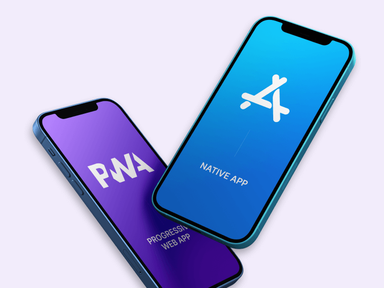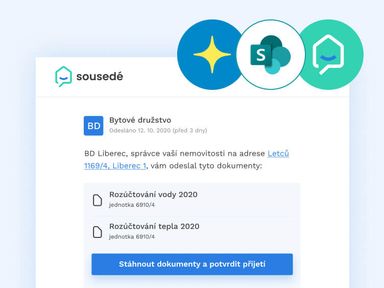Case study
Daktela integration –
how it is with the
"ready-made solution"?
About the project
After a year since the launch of Kalkulátor.cz, a partner asked us to create a suitable interface for customer service. The goal was to increase the efficiency of the sales team and simplify regular and repetitive processes. Read how we got to the "final" interface.
Phase 1
The first important task was to get the project up and running as quickly as possible in the MVP phase. Since there were enough members in the sales team from the beginning, it was clear that we needed a VoIP PBX. Together with our partner, we searched the market for an affordable solution. After several demo calls, we finally chose Daktela's service.
Integration without fun 3 in 1
We chose the 1click business process management tool to integrate the Kalkulator.cz and Daktela systems. We can definitely work well with 1click. It's a user-friendly fast process engine for managing more complicated business flows. Its undeniable advantage is its easy integration with any other platform. So if you are solving or will ever solve a more complex business workflow in the future, 1click is the right fit. It will simplify and speed up your entire solution.
Back to the Daktela integration.
Leads (business cases) are created in the Kalkulator.cz system. The customer goes through the form and enters contact details just before the results are displayed. According to these data, the customer's profile is created in Kalkulator.cz from where it is sent to 1click. 1click then sends the data to Daktela switchboard and establishes the contact. The results are displayed to the customer on Kalkulator.cz, thus creating a calculation. Information about the calculation is sent to 1click, where a task is created in a bulk salesmen queue (there can be several queues depending on the vertical and task type). The salesman picks up the task from the bulk queue to his personal queue, goes through directly from 1click to the switchboard into the client profile and can call or send a text message. The task already remains in the salesman's personal queue.
We have been operating in this model for about 1 year.
Phase 2 & 3
After some time, the management of the sales team evaluated that only "good" leads are selected by the salespeople and the other ones "rot" and are processed with a long delay or even not at all.
Prioritisation within the sales team
Not only did salesmen choose good leads, but the queue was generally unorganized which was a big complication for new salesmen who were not familiar with 1click yet. This favored skilled salesmen who had been working with the system for a long time. They had much better results. And this was the motivation for creating a system that would behave like a very experienced skilled salesman and prioritize in the same way. After all, the goal of a good salesman is profit maximization.
It is clear that each lead has its own priority, but it is wrong that each salesman determined it according to himself. It was necessary to prioritize each lead centrally. How to do it?
How to do it?
We needed to come up with a model that takes into account not only the monetary value of the lead, but also the time and ability of the salesman. After several discussions, we came to the conclusion that we needed to create a custom task manager within the application that would work with the priority model.
In transition phase 2, we were able to create tasks and assign them to salesmen according to a defined priority. The key rule was to assign only one active task to just one salesman. At that point, we essentially took the 1click tool out of the process. Already during the implementation we encountered the problem that the salesmen were working in two systems - the contact calls were still made from Daktela. (Just a reminder that in phase 1 it was 3 systems).
Working with Daktela
When working with the Daktela API, we came to the conclusion that a full implementation of Daktela might not be a problem. This would allow us to control the entire control panel via the API - the ideal situation. This began phase 3 and we set about implementing the full PBX.
Daktela undoubtedly has its advantages, but it can't prioritize, it can't compute operations over free capacity, and it can't do sophisticated queue management. Therefore, we implemented this part directly into the core system, including advanced calendaring and scheduled tasks. So we use Daktela to do what it does best - make calls, store calls, report call center activity (calls received, their length, etc.). In the course of the integration, we have learned to work with Daktela especially efficiently. We tried different ways and now we know exactly where and how to use it and what to integrate it with. If you are going to use Daktela, we are happy to advise and share our experience.
Result beyond expectations
Now the sales team works only in one system - Back office application Kalkulátor.cz.
Lukáš Kaňok (head of the Kalkulátor.cz sales team) confirms the improvement of business goals thanks to this implementation:
"The biggest shift I see is the simplification of the process, thanks to which the salesman has on average 45% more dialed calls, which is a significantly higher number than I expected."
A big advantage of the system is the ability to limit the salesman's score. This feature is used for newcomers to learn.
Conclusion
Over time, any project may reach a stage where the 3rd party application interface is inadequate and may not meet 100% of your team's needs. So when choosing a 3rd party solution, it's a good idea to thoroughly explore the API options - and ask yourself, can't we actually write the user interface ourselves? Sometimes you may even find yourself writing all the functionality that is key to the business goals by yourself. But in this particular case, it certainly didn't make sense to program our own VoIP PBX.
An alternative solution may be to have a 3rd party writing a "plugin" to the app specifically for you. But then the implementation is often expensive, the delivery date is too long, and it still may not meet your needs 100%. Another aspect is that for these key areas you need to constantly modify, improve, optimize which can be very inefficient with an external supplier especially in terms of time.
If you're ever thinking about integration, it's definitely worth discussing all the options with experts who are in the know and have experience. You will save time and money.
Author: Martin Tryzna
Published on: October 2022
Project team

Jakub Janata
integration and development

Martin Tryzna
product manager

Jakub Gräf
UX designer

Martyna Soroka
project manager

Petr Bosák
tester

Vítek Zakouřil
OneClick expert
Technologies
React.js
GraphQL
PHP
Next.js
Material UI
Styled Components
Symfony
Typescript
Tailwind
PostegreSQL

















